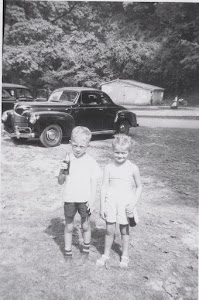 |
| Survey crew 1884 with natives near Chapleau CPR Archives |
Ian Macdonald, former Chapleau resident who at one time worked for the Canadian Pacific Railway, and is now retired head of the department of architecture and professor emeritus at the University of Manitoba, shares his research into the CPR's strategy of stretching budget by designing a limited number of efficient and economical building types and duplicating them as many times as necessary. The CPR standard T-1 depot is a good example of this strategy. Here is Ian's story on the T-1 depot. He will share more on Chapleau's railway heritage in a later column. Thanks so much for this insight Ian. MJM
CLICK ON IMAGES TO ENLARGE!
CLICK ON IMAGES TO ENLARGE!
By Ian Macdonald
Chapleau’s railway heritage commonly refers to locomotives and rolling stock but also includes the town itself and what makes it unique and distinctive.
Chapleau, as a community, actually began 82 miles east of the town’s present location at Biscotasing. Westbound track laying crews had proceeded as far as Bisco by early October 1884 where a temporary divisional point was established. The CPR’s survey team laying out the route and staking out the town site had reached Chapleau in the fall of 1884. The track laying crews, hard on the heels of the surveyors, arrived at Chapleau in February 1885. In a matter of a few short months, the CPR would have to build a fully operational permanent divisional point and relocate an entire community from Biscotasing to Chapleau. Speed of construction was therefore one of the major factors influencing how things would be built.
 |
| Missinaibi station CPR Archives Ian Macdonald collection |
Chapleau was one of the last divisional points on the massive railroad project to be built at a time when the financial resources of the CPR were close to being exhausted and the Ottawa government was in a state of complete chaos. In those desperate days it was necessary to make one dollar do the work of a hundred. Chapleau’s buildings would therefore be no more or no less than what was necessary to do the job. Building solutions had to be innovative, cost effective and functional.
 |
| Bisco station. CPR Archives Ian Macdonald collection |
One of the CPR’s strategies of stretching budget was to design a limited number of efficient and economical building types and duplicate them as many times as necessary. The CPR standard T-1 depot is a good example of this strategy. Apparently by 1886 there were sixty-two depots built from the same set of drawings. The T-1 depot type consisted of a 30 ft. x 24 ft. two storey building and a 24ft. x 40ft. single storey baggage room. The first depots at Missinaibi and Biscotasing were examples of this kind of building.
 |
| T-1 Drawing CPR Archives Ian Macdonald collection |
The first depot at Chapleau was similar to the typical T-1 with the exception of a larger single storey component, which was fifty feet in length and contained the baggage room, Dominion Express and a restaurant. The original Chapleau depot was purchased by G.B.Nicholson in 1910, relocated to Monk Street and converted to housing. These buildings, still fully functional, are one of the last existing examples of this iconic CPR depot and most certainly the last example of a divisional point depot
 |
| Chapleau station CPR Archives Ian Macdonald collection |
It should be noted that the exact system that the CPR used for classifying their early depots is either unknown or not obvious. T-1 which is short for Type-1 is the most commonly used reference for this depot type . They have also been occasionally referred to as “Van Horne stations”.
As a matter of interest, one of the only other remaining T-1 depots in existence is located in Stirling, Ontario near Trenton. An enterprising community group, sensitive to the practical value of heritage, acquired and relocated their depot to a new location on a new full basement foundation. The building was completely restored and now provides space for the Stirling Rotary Club as well as a variety of local community events. One might imagine the possibility of the original Chapleau depot enjoying a third life someday as, say, a convenience store and coffee shop that was part of a Railway Heritage park.
 |
| Renovated T-1 depot at Stirling. Ian Macdonald collection |
A few years ago, Bill McLeod asked me to write a few pages on Chapleau buildings for his most recent book on Chapleau titled Chapleau: Retrospective on Life in an Isolated Northern Community. I thought I could cover the subject in two or three pages and wound up sending him a forty five page monograph. I was, even at that, just scratching the surface and Michael has graciously provided me the opportunity of writing one additional column on the subject.
My email is mj.morris@live.ca



No comments:
Post a Comment